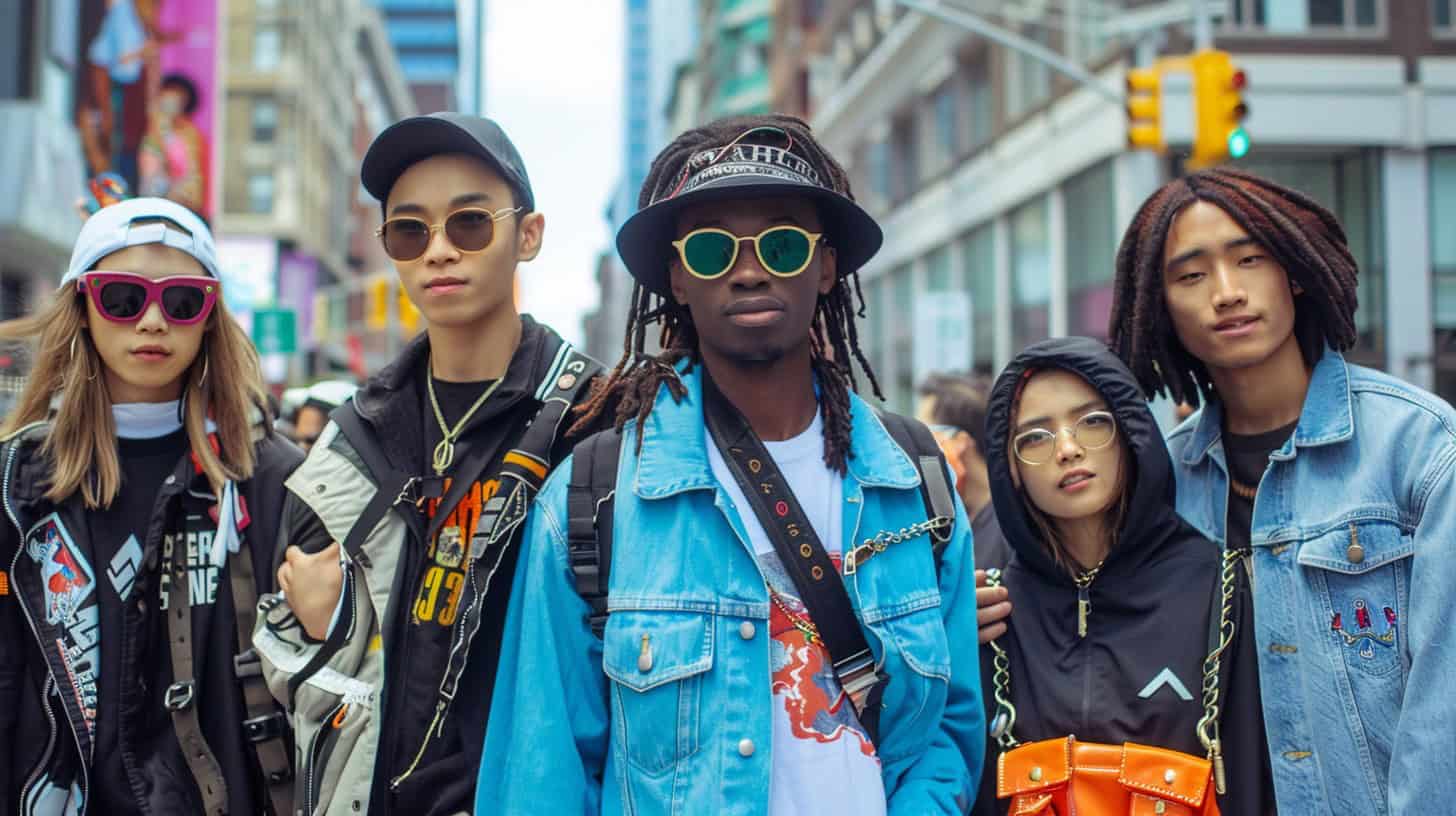Having trouble defining your style? Streetwear might be the answer. This global fashion phenomenon blends hip-hop, skateboarding, and sportswear. Our guide will show you six styles that shape urban fashion today.
Get ready to explore streetwear…
Key Takeaways
Streetwear started in the 1990s by mixing New York hip – hop and Californian surf culture. It focuses on comfort but keeps items rare to make them more wanted. Big brands like Supreme and Bape turn simple clothes into cool statements.
Sneakers are a big part of streetwear, with fans called sneakerheads collecting limited-edition shoes. The sneaker market was worth $85 billion in 2022 and is expected to grow.
Different styles under streetwear include Hypebeast, which chases rare items from famous brands; skater wear mixing skate culture with fashion; preppy looks blending school style with urban vibes; sportswear-inspired outfits for both sports and streets; hip-hop clothing showcasing big logos and bold colors; luxury collaborations bringing high-end fashion to the streets; and Japanese streetwear known for detailed designs.
Leading brands like Stüssy, Supreme, and A Bathing Ape show how popular streetwear has become. They mix luxury with everyday wear, making this fashion accessible to everyone.
Streetwear isn’t just about clothes but also expressing one’s personality and belonging to a community that appreciates music, sports, or specific fashion trends.
Table of Contents
Defining Streetwear: The Urban Fashion Phenomenon
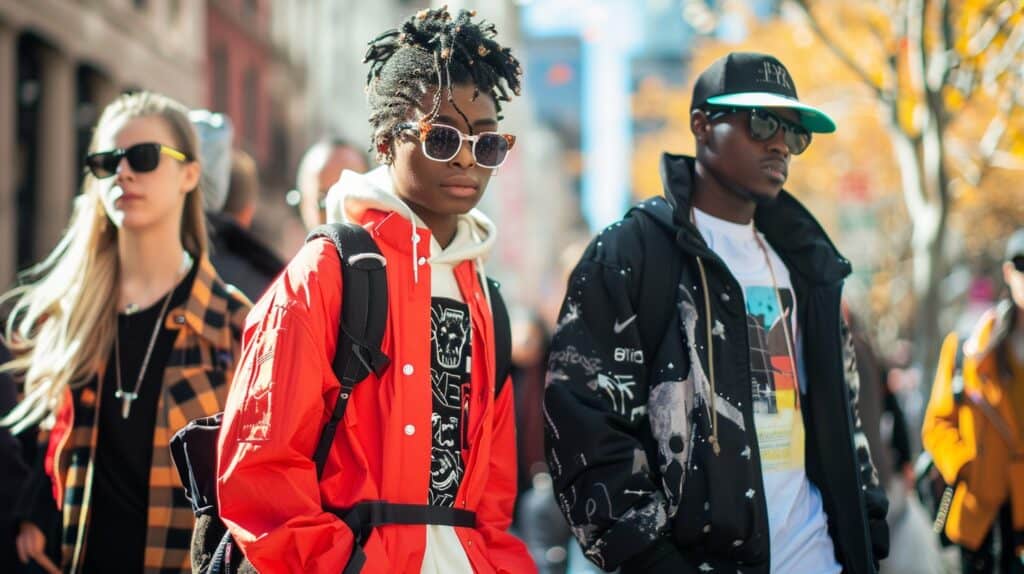
Moving on from the introduction, let’s dive straight into what streetwear really means. This style began mixing New York hip-hop fashion with Californian surf culture back in the 1990s.
It’s all about comfort—think jeans, T-shirts, baseball caps, and sneakers. But there’s a twist: brands make only a few pieces to keep things rare. This idea of making less so people want it more has shaped streetwear into what it is today.
I’ve seen firsthand how this trend isn’t just about clothes; it’s a way to show who you are without saying a word. Brands like Supreme and Bape turned simple items like hoodies and hats into statements that say, “I know what’s cool.” And sneaker collecting? It’s huge! The sneaker market hit $85 billion in 2022 and keeps growing.
Streetwear mixes skateboarding vibes, punk attitude, Japanese fashion smarts, and even high-end luxury feels from brands like Louis Vuitton teaming up with sportswear giants.
Streetwear turns everyday outfits into expressions of personality.
The Roots of Streetwear: A Cultural Overview
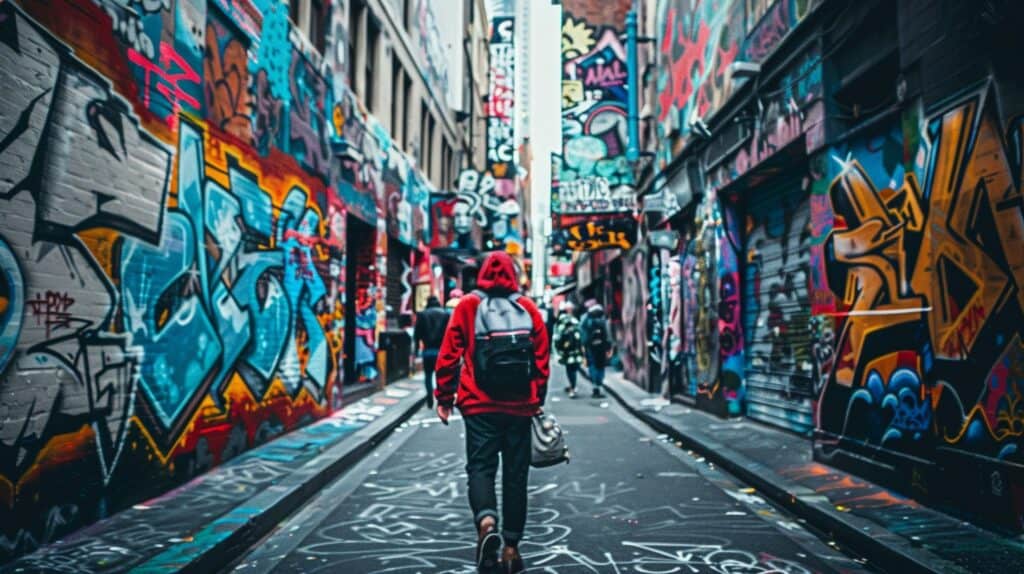
Streetwear’s roots dig deep into the soils of 1980s culture, intertwining with the vibrancy of hip-hop, the rebellious edge of skateboarding, and the intricate designs of Japanese street fashion.
This blend gave rise to a unique style that speaks volumes without saying a word. It’s more than clothing; it’s an identity formed on city streets and within subcultures that value sneakers as highly as luxury brands do haute couture.
These influences shaped streetwear into what we see today – a fashion phenomenon that democratizes high-end looks, making them accessible and wearable for everyday people.
Central to this urban attire are sneakers, which have evolved from mere footwear to cultural icons thanks to sneakerheads and their passion for exclusive launches by giants like Nike Air Jordans and Adidas.
My first-hand experience in sneaker collecting started in the late ’90s, when snagging a pair felt like striking gold because each design told a story—a mix of athletic prowess mixed with street smarts.
Adopting elements from skater culture further diversified streetwear; garments became more durable, water-resistant yet stylish enough to make a statement at any city spot or skate park.
Brands such as Carhartt and Alpha Industries began integrating military uniforms’ robustness into their lines, resonating well with folks aiming for both comfort and flair in their outfits—a testament proven time again through widespread adoption across cities globally.
Essential Elements of Streetwear Style
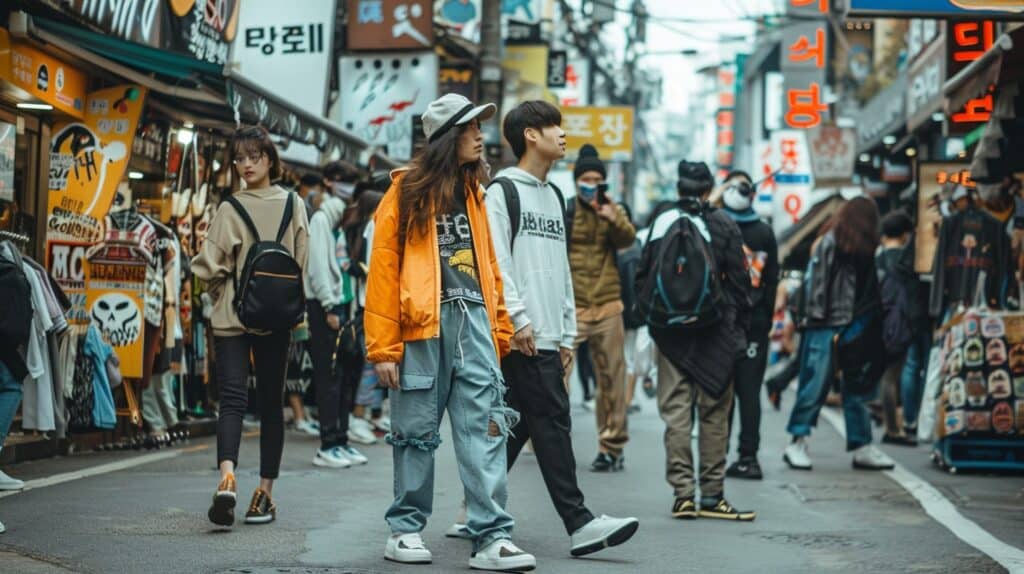
Streetwear style mixes cool tees, unique sneakers, and bold logos to make you look better… Keep reading to find your street style and dress with confidence!
Embrace the Hype: Hypebeast Culture
Hypebeast culture loves rare and limited-edition clothes. Fans chase brands with big names, looking for unique pieces others don’t have. They mix music, skateboarding, and hip-hop styles into their look.
It’s all about finding the best sneakers and clothes that show who they are.
In Hypebeast culture, your outfit isn’t just clothes—it’s a statement of authenticity and expression.
This scene values exclusive items from famous labels. People in it use social media to learn about the latest trends and where to get them. They also go to special releases or online drops to get new items before anyone else can.
The Art of Sneaker Collecting
Moving from the buzz around Hypebeast culture, sneaker collecting shines as a vital part of streetwear. This passion goes deep into picking rare shoes, like hunting treasures. Think of it as building a museum at home.
One where every pair tells a story of fashion and function blending together.
On my quest for the Air Jordan 4 White Cement, I experienced firsthand this thrill. The sneaker market thrives, valued at $85 billion in 2022 with a forecast to jump to $120 billion by 2026, according to Repskiller.org.
Sneakerheads know—it’s not just about owning sneakers; it’s securing pieces of art that define street style and identity.
Leading Streetwear Brands and Their Influence
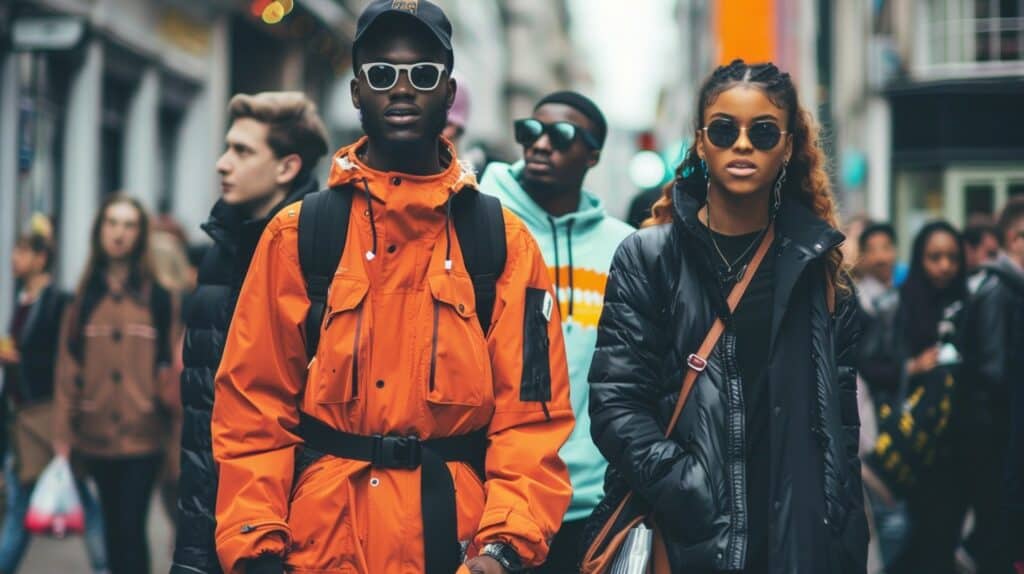
Stüssy, Supreme, and A Bathing Ape are giants in streetwear. They’ve joined forces with luxury names like Louis Vuitton and Dior. This mix shows streetwear’s big impact. I once saw a line around the block for a Supreme drop.
It proved people crave these brands’ cool factor.
These leading labels shape trends in fashion, sneakers, and pop culture. The sneaker market alone is set to hit $120 billion by 2026 because of them. Their clothes speak to all – they’re for everyone, regardless of size or background.
Brands like these don’t just sell clothes; they sell status and belonging in today’s fast-paced world.
Exploring the Diversity of Streetwear Styles
Streetwear styles are a mix of many worlds, showing how fashion meets culture on city streets. From skate parks to high-end shops, each look tells its own story in the vast urban wardrobe.
Skateboarding Meets Fashion: Skater Streetwear
Skateboarding shapes skater streetwear. This style mixes skate culture, postmodern looks, and a DIY attitude. Skaters wear baggy pants, graphic tees, and sneakers. Brands like Palace Skateboards lead the trend.
This fashion draws ideas from brutalism and futurism too. You see kitsch designs on shirts and jackets. It’s about showing off your unique taste while riding a skateboard or just hanging out.
The Intersection of Academia and Street Style: Preppy Streetwear
Preppy streetwear mixes school style with cool urban vibes. Picture sweaters tied around shoulders, polo shirts, and chinos—all worn in a relaxed way. It’s where Ivy League meets city streets.
This blend has turned heads and set trends, making preppy elements a staple in modern menswear.
Brands have fused classic prep with street-inspired designs to create outfits that stand out while staying true to their roots. Think bomber jackets over button-ups or sneakers with tailored pants.
Preppy streetwear shows you can mix smart with casual and still look sharp.
Athletic Aesthetics: Sportswear Inspired Streetwear
Sportswear has taken over the streets. It’s not just for the gym or playing sports. Now, tracksuits, performance sneakers, and athletic shirts are key in streetwear. This style mixes comfort with coolness.
I wore a pair of sleek joggers and felt stylish yet relaxed all day.
This look comes from sporty materials and designs used in new ways. Think about wearing basketball shoes with casual outfits, or pairing yoga pants with a smart coat. These choices show off a love for sports while keeping fashion in mind.
Next up, we dive into hip-hop’s influence on streetwear.
The Beat of the Streets: Hip-Hop Streetwear
Hip-hop streetwear takes its roots from New York City’s hip-hop culture in the late 1970s. It mixes comfort with attitude, showing off big logos and bold colors. Brands like Roc-a-Fella Records and artists such as Jay-Z and Run DMC made this style famous.
They often wore sneakers, oversized sweatshirts, and gold chains. This look became a way for fans to connect with their music heroes.
Today, hip-hop fashion is more than just clothes; it’s a statement of identity and history. Sneaker culture is huge here, with Air Jordans and Nike Air Force 1s being must-haves for many.
Hip-hop wear shows off one’s love for the music while staying comfortable and stylish. It proves that what started on New York streets now shapes global fashion trends.
High-End Meets Street: Luxury Streetwear
Luxury brands started teaming up with sportswear companies in the late 1990s. This mix brought “bling” culture into the streetwear scene. High fashion houses like Off-White and luxury designers such as Raf Simons now blend their unique styles with streetwear vibes.
They create pieces that are both fancy and fit for the streets.
These collaborations push streetwear into high fashion shows. Runway designs take cues from urban style, making sneakers and hoodies part of luxury collections. This move brings street clothes to a new level, where they are seen as status symbols among wearers.
Next, let’s dive into the distinct flair of Japanese Streetwear…
The Unique World of Japanese Streetwear
From luxury to a distinct culture, Japanese streetwear stands out. It mixes Western subcultures like hip-hop and punk with local traditions. This fashion style is known for bold graphics, detailed designs, and high quality.
Brands blend postmodernism, brutalism, DIY scenes, futurism, and kitsch aesthetics into their clothes.
Japanese streetwear shows attention to detail in every piece. Clothes often have intricate designs that catch the eye. They take influences from both past and future styles, making something unique.
With its mix of cultures and focus on design details, this style continues to shape global fashion trends.
